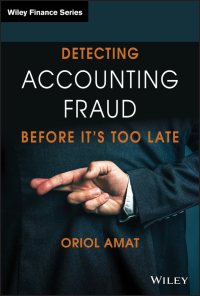Answered step by step
Verified Expert Solution
Question
1 Approved Answer
Please show work in answer. Activation Exercise 9-2: Estimating Uncollectibles: Percent of Sales Method Terms and Definitions The allowance method requires an estimate of uncollectible



Please show work in answer.
Activation Exercise 9-2: Estimating Uncollectibles: Percent of Sales Method Terms and Definitions The allowance method requires an estimate of uncollectible accounts at the end of the period. This estimate is normally based on past experience, industry averages, or forecasts of the future. If the portion of credit sales to total sales remains constant, the percent of sales method may be applied to estimate bad debt expense. Feedback Check My Work When a business invoices a customer on account, it opens up the possibility that the customer may not ever pay in the future. Understanding the Business Transaction The percent of sales method is a calculation the amount of Bad Debt Expense that is reported on the Income Statement by multiplying total Credit Sales by an estimated percentage that will become uncollectible. Jake Company had the following data on December 31, 20x1, before any adjustments: Accounts Receivable, December 31 $371,600 debit $21,540 credit Allowance for Doubtful Accounts, December 31 Total credit sales $4,170,000 Bad debt as a percent of credit sales 0.53% Based on this data, estimate the amount of Bad Debt Expense that Jake Company should record as part of its December 31, 20x1 adjusting entry: Bad Debt Expense Feedback Check My Work Under the percent of sales method, Bad Debt Expense is the focus of the estimation process. Recording in the Accounting System The adjusting entry that Jake Company should record for Bad Debt Expense on December 31, 20x1 is: 12/31/X1 Bad Debt Expense Allowance for Doubtful Accounts Jake Company's Accounts Receivable and Allowance for Doubtful Accounts on December 31, 20x1, before adjusting entries, are shown below. Update these T-accounts for the adjusting entry for Bad Debt Expense, showing the balance in Jake Company's Accounts Receivable and Allowance for Doubtful Accounts after adjusting entries have been made. Accounts Receivable 12/31/X1 371,600 12/31/X1 Allowance for Doubtful Accounts 21,540 1/1/X1 adjusting entry 12/31/X1 Determine the amount of Bad Debt Expense that Jake Company should report on its 20x1 income statement. Also determine the net realizable value of Jake Company's Accounts Receivable after the adjusting entry is made on December 31, 20x1. Income Statement: Bad Debt Expense Balance Sheet: ] !] Accounts Receivable, Dec. 31, 20X1 Less: Allowance for Doubtful Accounts Net Realizable Value of Accounts Receivable, Dec. 31, 20X1 Under the percent of sales method, the amount of the adjusting entry is equal to the amount of Bad Debt Expense estimated under the percent of sales method. Financial Statement Impact Bennett Company had the following data on December 31, 20x1, before any adjustments: Allowance for Doubtful Accounts, December 31 $31,000 credit Total credit sales $6,400,000 Click here to use the sliders for (1) Bad debt as a percent of credit sales and (2) Accounts Receivable, December 31 (before adjustments) to answer the following questions: 1. Answer parts a., b., C., and d. if the company (1) estimates Bad Debt Expense at 0.3% percent of credit sales, and (2) has Accounts Receivable, December 31 (before adjustments) of $425,000. a. What is the amount of Bad Debt Expense that Bennett Company will report on its 20X1 income statement? $ b. What is the net realizable value of Accounts Receivable that Bennett Company will report on its December 31, 20x1 balance sheet? $ c. If bad debt as a percent of credit sales increases, the Bad Debt Expense that Bennett will report on its 20x1 income statement will increase d. If Accounts Receivable, December 31 (before adjustment) increases, the Bad Debt Expense that Bennett will report on its 20X1 income statement will remain the same 2. Answer parts a., b., C., and d. if the company (1) estimates Bad Debt Expense at 0.6% percent of credit sales, and (2) has Accounts Receivable, December 31 (before adjustments) of $525,000. a. What is the amount of Bad Debt Expense that Bennett Company will report on its 20X1 income statement? $ b. What is the net realizable value of Accounts Receivable that Bennett Company will report on its December 31, 20x1 balance sheet? c. If bad debt as a percent of credit sales decreases, the net realizable value of Accounts Receivable that Bennett Company will report on its 20x1 income statement will increase d. If Accounts Receivable, December 31 (before adjustment) decreases, the Bad Debt Expense that Bennett Company will report on its 20x1 income statement will remain the sameStep by Step Solution
There are 3 Steps involved in it
Step: 1

Get Instant Access to Expert-Tailored Solutions
See step-by-step solutions with expert insights and AI powered tools for academic success
Step: 2

Step: 3

Ace Your Homework with AI
Get the answers you need in no time with our AI-driven, step-by-step assistance
Get Started


